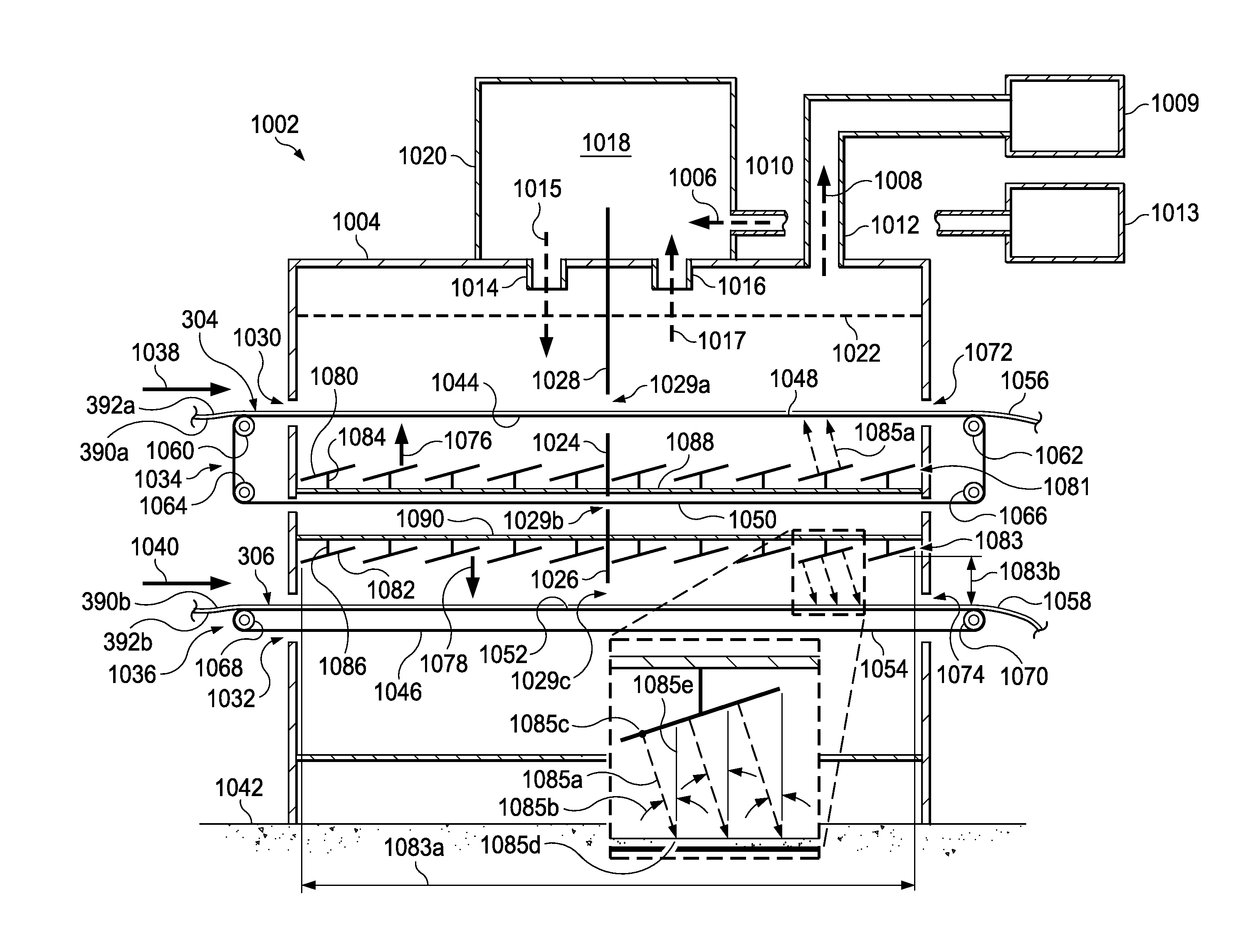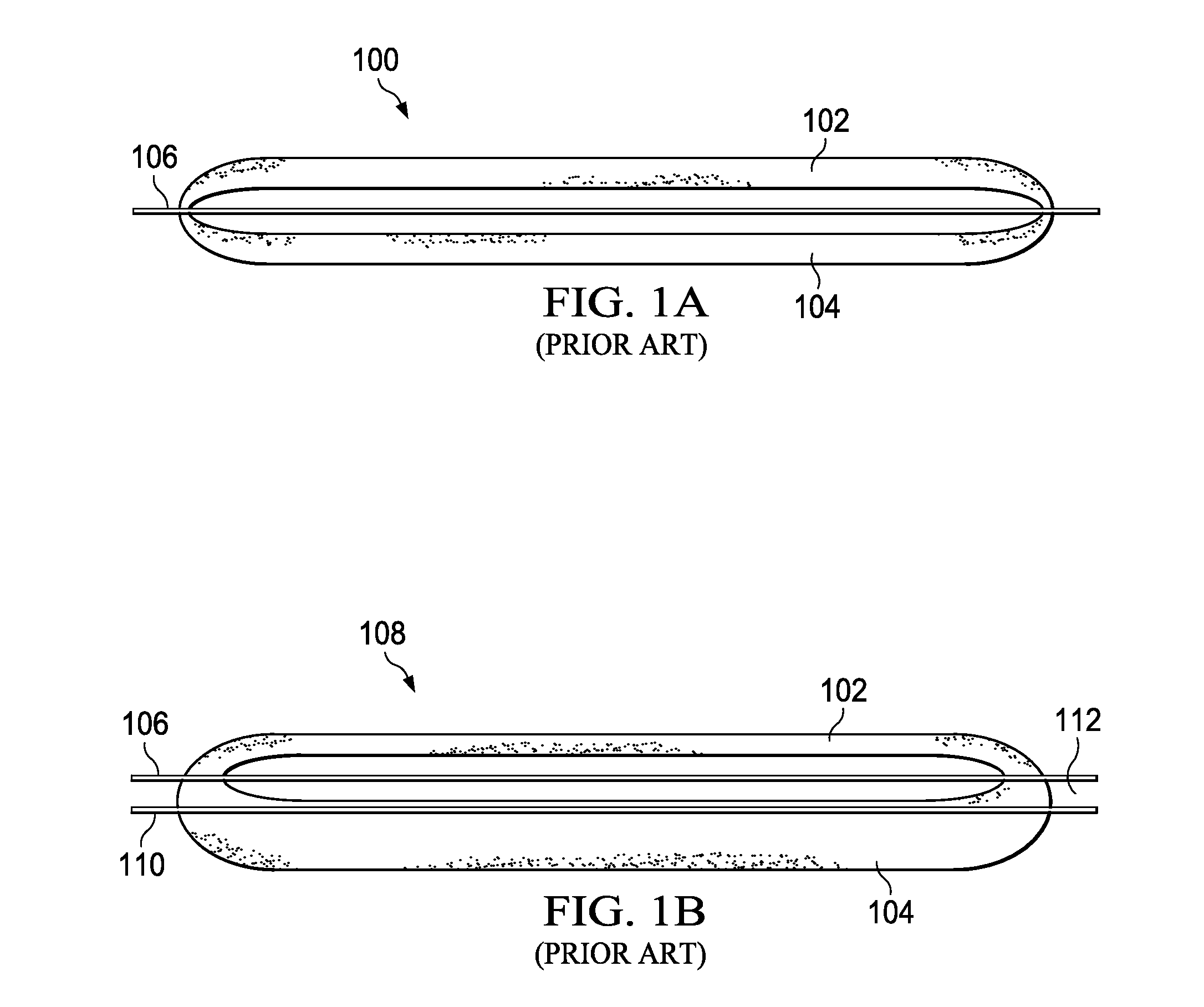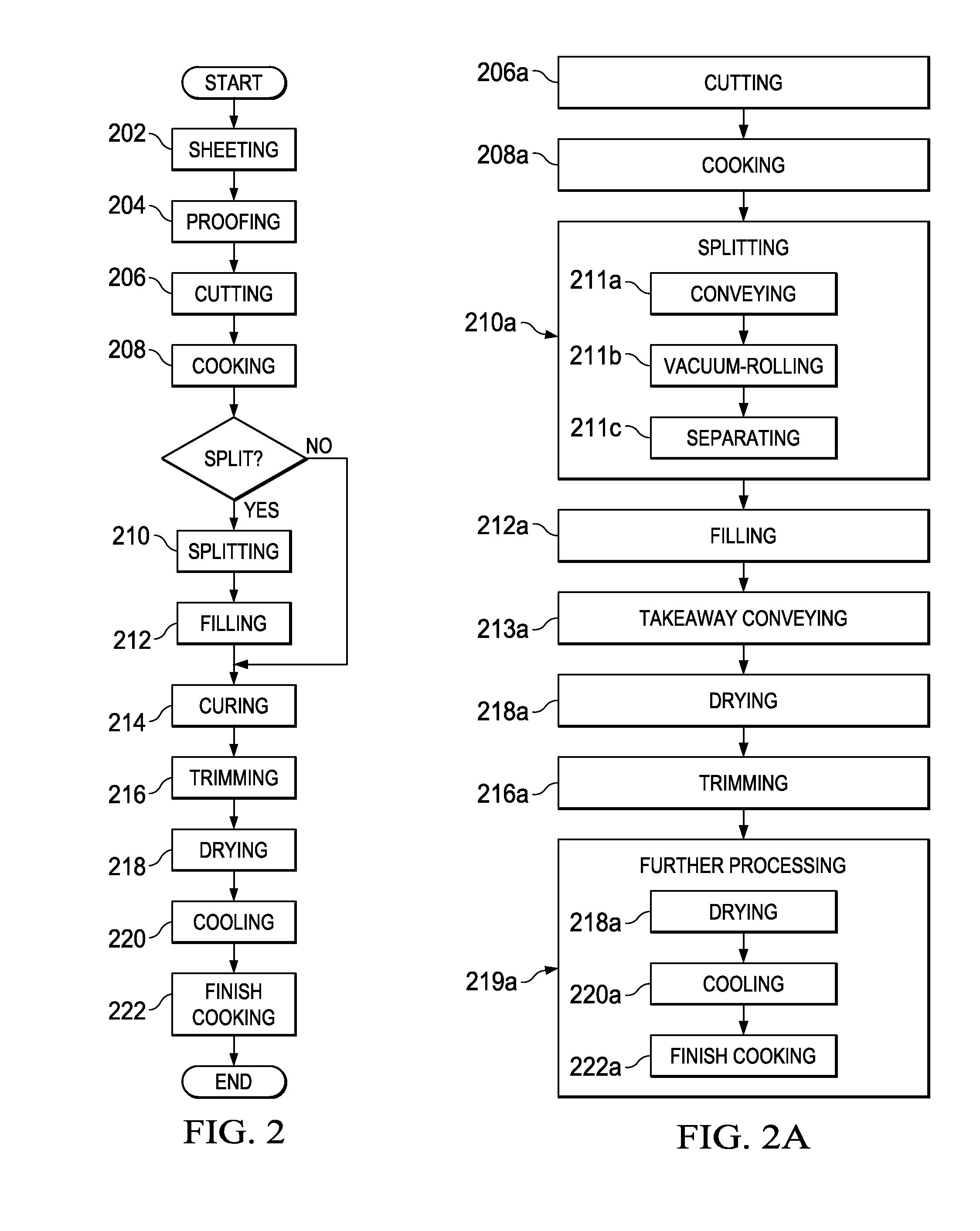Continuous process and apparatus for making a pita chip
a continuous process and technology of pita chips, applied in the field of making pita bread and chips, can solve the problems of preventing the release of steam from the interior of the bread, time-consuming and labor-intensive bread, and not conducive to efficient, continuous operation, etc., to eliminate or reduce the disadvantages of the effect of reducing the disadvantag
- Summary
- Abstract
- Description
- Claims
- Application Information
AI Technical Summary
Benefits of technology
Problems solved by technology
Method used
Image
Examples
Embodiment Construction
[0063]It should be understood at the outset that although illustrative implementations of one or more embodiments are provided below, the disclosed systems and methods may be implemented using any number of techniques. The disclosure should not be limited to the illustrative implementations, drawings, and techniques illustrated below, but may be modified within the scope of the appended claims along with their full scope of equivalents. Unless otherwise noted, like elements will be identified by identical numbers throughout all figures.
[0064]FIG. 2 shows one embodiment of Applicants' process 200 illustrating various steps in the process 200 pursuant to embodiments of Applicants' invention. After mixing of a bread dough, the dough is sheeted 202 into a continuous sheet of dough. In one embodiment, the dough sheet is optionally proofed 204. The dough sheet is then cut 206 into two or more continuous dough strips. Depending on the embodiment practiced, the dough strips proceed directly...
PUM
 Login to View More
Login to View More Abstract
Description
Claims
Application Information
 Login to View More
Login to View More - R&D
- Intellectual Property
- Life Sciences
- Materials
- Tech Scout
- Unparalleled Data Quality
- Higher Quality Content
- 60% Fewer Hallucinations
Browse by: Latest US Patents, China's latest patents, Technical Efficacy Thesaurus, Application Domain, Technology Topic, Popular Technical Reports.
© 2025 PatSnap. All rights reserved.Legal|Privacy policy|Modern Slavery Act Transparency Statement|Sitemap|About US| Contact US: help@patsnap.com



